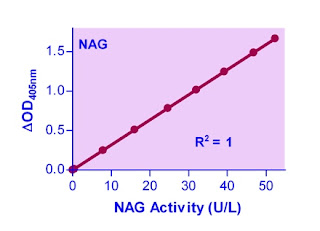About Caspase Assay Kit
The Caspase assay kit uses colorimetric method for detection. One such kit can conduct 100 tests. It normally functions in the context of cell lysate samples and determines enzyme activity. It takes almost two hours to complete one test.
Description
A caspase assay kit deals with the functioning of caspases, which work in accordance with the sequence DEVD. It also provides a way of assaying that is easy and simple at the same time. This assay works on a principle known in the scientific world as spectrophotometric detection and deals with chromophore p-nitroaniline, also referred to as p-NA. This is done after it separates from DEVD-pNA, which also happens to be a labeled substrate.
How does the detection happen?
One can quantify the p-NA light emission by using either a microtiter plate reader or a spectrophotometer. They can be used at either 405 or 400 nm. When one compares how much p-NA has been absorbed from an apoptotic sample by using uninduced control it allows them to find out the extent of increase of caspase 3 activity at a cellular level.
When any proteases or caspases belonging to the ICE family are activated they start apoptosis in cells of mammals. This kit is used primarily for functional studies and reagents play a major role in the same.
Why is this kit important?
Any cysteine proteases that belong to the caspase family play a major role in the process known as apoptosis. Caspase 3 is also referred to as CPP32, apopain, and YAMA. As far as the apoptotic proteins of the caspase family are concerned Caspase 3 has been studied the most. It is also synthesized as a pro enzyme that happens to be inactive and is processed in cells. They undergo apoptosis by way of self proteolysis. At times they may also be separated by other upstream proteases.
Examples of such caspases are Caspase 8, 10, and 9. When processed, Caspase 3 is made up of both small (12 kD) and big (17 kD) units. They come together and form the active enzyme. Caspase 3 gets separated at Asp175 – Ser176 and Asp28 – Ser29. When it is active Caspase 3 can proteolytically separate and activate other caspases such as Caspases 6, 9, and 7. It can also target important targets in cells such as DFF and PARP. When this gene is alternatively spliced it leads to a couple of transcript variants that encode the same protein.




Comments
Post a Comment